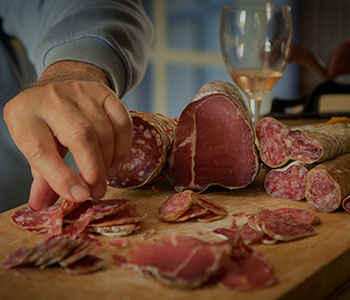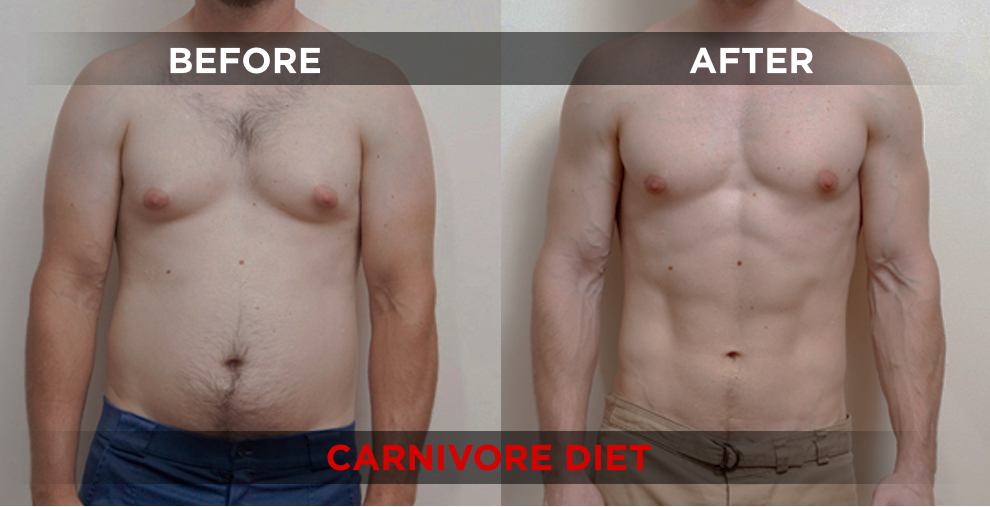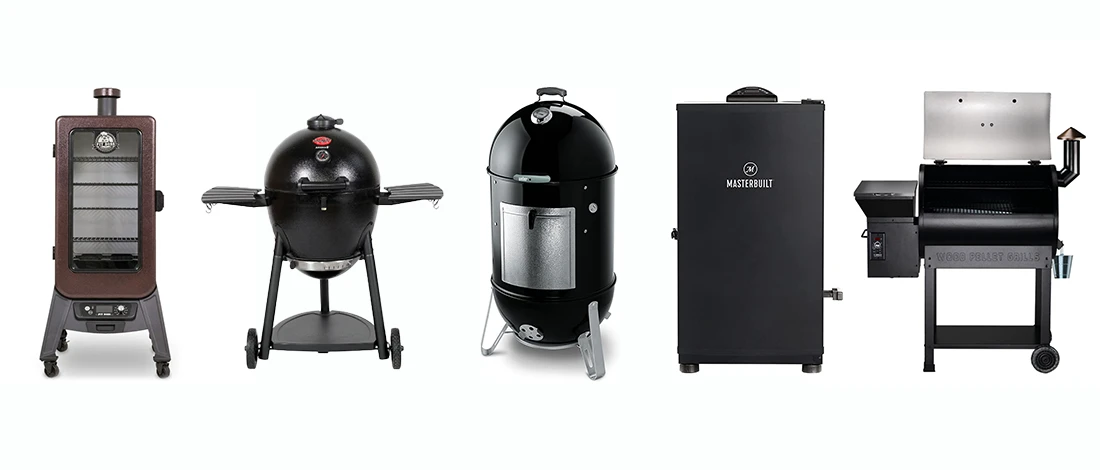Are you ready to explore whether an all-meat diet could be the secret you've been missing for your health woes? At Carnivore Style, we dive deep into the science and experience of meat-based eating, helping you understand whether this approach aligns with your health goals.
A few years ago, I started practicing the carnivore diet, and I'm grateful that I did. It has surprised me with many things about weight loss, digestion, health, and mental focus.
Join me as I dissect the potential health benefits and risks and unpack the diet's philosophical and biological underpinnings. If you’re intrigued about the carnivore diet, this article should help you answer your concerns regarding this dietary regimen.
Quick Summary
- The carnivore diet is a dietary regimen that involves consuming only animal products while excluding all plant-based foods.
- The diet emphasizes eating meat, offal, eggs, and some dairy products, with no restrictions on quantities.
- According to a 2013 study conducted by Boston University, adopting a carnivore diet could result in weight loss, enhanced heart health characterized by an average increase in HDL cholesterol of 5.1 mg/dl, decreased inflammation indicated by a mean reduction in hs-CRP, and fewer digestive issues.
What Is The Carnivore Diet?

The carnivore diet is a restrictive regimen that emphasizes consuming only meat and animal products. Carnivore Style’s team has explored how this diet impacts those who fully commit to it.
The meal plan primarily consists of beef, pork, chicken, fish, and turkey – my fridge staples. While some may find it appealing, there are strict rules, especially about macros.
This diet sets itself apart from keto and paleo. Keto's all about high fat, even for vegetarians. Paleo's meaty, but it allows greens, which strict carnivore doesn't.
Since embracing this lifestyle, I've connected with like-minded enthusiasts through my butcher. Weight loss and protein abundance are key health perks, fueling its rising popularity.
How To Get Started On The Carnivore Diet?

Over the past year, I have spent a lot of time with dieticians to develop better carnivore diet meal plans and put it all together in the following 5 relatively simple rules.
1. What Can You Eat?
Carnivore diet involves eating red meat and other meat and dairy products.
Here are some examples:
- Red Meat: Pork, Beef, Lamb, and Game
- White Meat: Turkey, Chicken, Fish, and Seafood
- Organ Meat: Liver, Kidney, Bone Marrow, Heart
- Eggs: Chicken, Duck, and Goose Eggs
- Dairy: Butter, Cheese, and Cream
Surprisingly for most people, these carnivore diet options provide all the nutrition needed, including vitamins, minerals, and protein.
2. How Much Can You Eat?
The straightforward approach is to eat until you're full. Meat works wonders as a filler, and you'll be surprised how little it takes to keep you satisfied while following the carnivore diet meal plan. This way of eating can also aid in shedding unwanted body fat in a short time.
On average, carnivore diet meal plans usually include around 2 lbs of meat daily. During the initial month, you might find yourself consuming even more as your digestive system adapts and cravings subside.
Once you've acclimated, you can monitor your calorie intake and activity levels for weight management. Decide whether your goal is muscle gain or weight loss. If you're hitting the gym daily and aiming to bulk up, consider upping your meat intake to 4 lbs or more.
3. When Can You Eat?

My recommendation for a carnivore diet is to stick with three meals a day. After approximately two weeks, your metabolism will adjust and become more efficient at using fat for energy, aiding in weight loss.
So, don't shy away from fatty meats; they're crucial to fuel your body and brain, similar to a ketogenic diet. Begin your day with a protein-rich breakfast, and maintain protein intake throughout.
This is especially important if you’re trying to build muscle, control body weight, and spend time at the gym every day.
4. What Can You Drink?
The simple answer is water and plenty of it. Coffee and tea, including herbal teas, are also okay, as long as you don’t sweeten them with any type of sugar.
What you want to avoid is any type of drink that contains carbs like sodas, fruit and veg juices, and energy drinks as these are likely to disrupt your weight.
Also Read: Coffee on a Carnivore Diet
5. How To Cook Your Meat?
Enjoy your meat the way you like it, excluding plant-based foods. Eating a variety of meats shouldn't be a hassle. For beef, aim for medium-rare to keep more protein intact.
If you prefer well-done, gradually shift towards rare. Ensure full cooking for pork and poultry for safety. Consider avoiding processed meats due to potential health risks.
Invest in a meat thermometer like ThermoPro TP20 for precision cooking. While some fish can be eaten raw, it's an acquired taste. Experiment and adjust to your preference.
Related Articles:
What Foods To Avoid On The Carnivore Diet?

On the carnivore diet, ditch non-meat stuff like fruits and veggies, which can be quite a change, especially if you're aiming to shed pounds.
Forget about fancy sauces and most seasonings. Stick with simple salt and pepper and keep it all about pure, natural meat.
Avoid heavily processed meats, like certain sausages, as they might sneak in grains, starches, or even sugar - unless it's a 100% meat deal.
Sadly, no booze allowed, including beer and wine. They're loaded with carbs and can mess with your carnivore diet.
Think You Could Handle a Carnivore Menu? - 6 Things To Consider
There are a few things you need to consider before jumping into a carnivore diet. While the instructions you have to follow are simple, that doesn’t mean it will be an easy task.
1. Living Without Eating Plant Foods

Considering low carb diets? Don't skip plant foods entirely. If you've journaled snacks like apples, bananas, or protein bars, they're off-limits on the carnivore plan. Stick to meat, ditch carbs – that's the essence.
2. Stick To Three Meals A Day
When you start, I'd suggest maintaining a balanced diet with 3 meals daily, if that's your current routine. It helps spread out your animal product intake.
This is also my recommendation for those bulking up at the gym. Heavy lifting demands a steady protein supply, thus the high-protein diet. For weight loss, many opt for intermittent fasting, eating only 1 or 2 meals with extended periods of just water in between.
3. Drinking More Hot Beverages

If you find the carnivore diet dull with just water, spice it up with some hot beverages. But remember, caffeine can dehydrate you, so stay hydrated while you work out. I've started enjoying caffeine-free herbal teas to keep things interesting.
Green tea might be an acquired taste, but it is very beneficial for your whole body due to the number of antioxidants.
4. Cook Meat To Desired Taste
When you're new to the carnivore diet, start with what you like. If you prefer rare beef, you're already on the right track for weight loss. Less cooking preserves protein. If you usually have well-done beef, stick to it for now and shift to rarer options as you embrace the all-meat journey.
While it’s recommended to cook pork and poultry well, you should avoid getting to that completely dried-out stage. Use a meat thermometer if you’re struggling with this.
5. All Kinds Of Meat Are Your Friend

Don’t just head to your butcher and ask for pork chops and striploin steaks. Change things up a lot between beef, pork, lamb, fresh fish, and even organ meat for your all-meat diet. By switching things around daily, you will make sure that you maximize your intake of vitamins and minerals, even if you're eating only meat.
This also ensures you get the full spectrum of amino acids so that your body has everything it needs.
6. Athletes Have To Be Patient For Results
High-performance athletes may initially struggle with the carnivore diet's meat-only approach. This happens because your body, which usually relies on carbs for energy, must now adjust to processing more saturated fat. It's not about calorie shortage but rather a shift in calorie sources.
Expect improvements in both physical and mental energy. Some athletes might consider incorporating a few plant-based items during the initial weeks to maintain optimal energy levels and peak performance.
The carnivore diet and ketogenic diet both permit protein and fat while restricting carbs, but the carnivore approach is considerably more extreme. Because you aren’t eating any plant foods at all, your carb intake is virtually zero.
- Sean Hyson, Editor in Chief for Onnit
Recommended Article: Carnivore Diet For Bodybuilding
How to Transition to a Carnivore Diet Safely and Effectively? - The Different Levels

Dramatic dietary shifts can be overwhelming. Although the carnivore diet rules are simple, remember key details. Ease into it by progressing through several stages.
Level 1
At Level 1, the key rule is simple: if it's meat, it goes on your plate—no need for strict guidelines on meat types, cuts, or processing levels. You can also enjoy tea, coffee, eggs, full-fat cream, butter, and cheese to add variety.
You're allowed to use table salt, pepper, and certain electrolyte supplements. They enhance your food's flavor, make it feel more like home-cooked meals, and help combat dehydration effects.
It’s still a drastic change, but not quite as full-on as the final level. This gives you more of a chance to physically and mentally adapt. You'll learn more about this when you read the book of Dr. Shawn Baker, an orthopedic surgeon who's also an advocate of the carnivore diet.
Level 2
After spending 2 to 4 weeks at level 1, you're ready for the next step: ditch all non-meat items. Now, it's all about meat and water, nothing else. Say goodbye to processed meats like pastrami and salami, along with dairy products. You can still use a bit of salt and pepper, but don't overdo it. The goal is to leap closer to becoming a genuine carnivore.
Level 3
After spending 2 to 4 more weeks at level 2, advance to level 3. Here, focus exclusively on grass-fed beef. Swap beef cuts freely and consider adding cow organ meats. Though pricier, the quality and nutrition of grass-fed beef are superior. If it strains your budget, stick to beef and skip pork, fish, and poultry.
Beyond Level 3
Stick with level 3 for around 30 days and see how your digestion and metabolism change. You'll notice increased physical and mental energy.
Next, reintroduce some items from levels 2 and 3 slowly. Keep the focus on grass-fed beef, but occasional switches to lamb and seafood can keep you motivated.
The goal? Spot which meats make you feel bloated or unwell. Eventually, you'll have a list of what works best for you.
Choosing What Level To Get Into First
Generally speaking, I suggest you start at level 1. But, if you’re not a caffeine addict, then you can jump straight to level 2.
I have had friends try to jump straight into level 3 and just struggle too much with the new restrictions. Try to spend at least 30 days between levels 1 and 2 before you take that final step.
What Are The Benefits Of The Carnivore Diet?

The benefits of the carnivore diet include improved heart health, weight loss, and better mental focus, among others.
1. Weight Loss
At the top of any diet list, what's really fascinating is how your body reacts. When you go high-protein, zero-carb, your blood sugar levels stabilize.
Without carbs turning into fat, your body shifts into ketosis, just like in keto diets. It starts burning food fat for energy, and if that's not enough, it taps into stored fat. This leads to rapid weight loss. So, to sum it up, this diet stabilizes blood sugar, triggers ketosis, and burns fat for quick weight loss.
2. Improved Heart Health
It’s common wisdom that fat and heart attacks go together. As it turns out, there are a couple of reasons to believe that this is a misconception.
In a 2016 study by Hannah Nichols from MNT, it was highlighted that this theory has been reversed, pointing instead to sugar as the primary culprit behind heart disease [2].
And then, there is the “Inuit Paradox”, where the people of Northwestern Alaska practically only eat fat and blubber with hardly a vegetable in sight. Despite this, they have a 10 times lower risk of heart disease [3].
Today, when diet books top the best-seller list, and nobody seems sure of what to eat to stay healthy, it’s surprising to learn how well the Eskimo did on a high-protein, high-fat diet.
- Patricia Gadsby, Discover Magazine
3. Reduces Inflammation
Inflammation can be troublesome for obese individuals, affecting their digestion and blood vessels.
But, in the last 50 years, meat took some heat for causing health issues, including inflammation. However, research from the National Institute for Biotechnology from 2014, which pitted a traditional low-fat, high-carb diet against a high-fat, low-carb one in obese adults, showed something unexpected.
It went against the norm and actually demonstrated that the high-fat diet led to more significant reductions in inflammation [4].
4. Less Digestive Problems
One of the most common questions I get is how I handle all the bloating. We all know that a lack of fiber causes constipation, and you’ll soon be reaching for some form of medication to get some relief.
It has been discovered that reducing fiber intake while experiencing constipation has remarkably positive effects on the digestive system, as demonstrated by a 2012 study conducted by scientists from NCB. Personally, this is not something I have encountered any problems with [5].
Read More: Carnivore Diet Constipation
5. Better Mental Focus
Just like the ketogenic diet, the carnivore diet alters how your body works. Instead of relying on glucose, it turns to ketones for energy.
While you might think easy fuel is best for the brain, it's the opposite. Glucose leads to energy ups and downs, but ketones, sourced from your diet or excess fat, offer mental clarity during an elimination diet.
6. Easy Diet Plan
Suppose you have tried different diets and other ways of eating options to lose weight. In that case, you’ll know that it’s pretty much always about eliminating foods, counting something else, and then adding a sprinkle of magic carnivore diet supplements.
They are rarely easy to understand and rather difficult to stick to. With the carnivore diet, it’s completely different. If a product came from animals, then it’s pretty much on the menu. As you progress, you do restrict it a little, but you don’t need to overthink it.
Are There Side Effects To The Carnivore Diet?

There are side effects to the carnivore diet such as going through an induction phase, vitamins and minerals deficiency, and dehydration.
1. Keto Flu
Much like keto, when your body shifts from glucose to ketones, you experience an initial phase. You might feel flu-like symptoms, such as stomach issues, aches, and fatigue. These are common, short-term discomforts that typically improve your health within days.
Recommended Article: Keto vs Carnivore Diet
2. Lack Of Vitamins
Incorporating research, we find that while fruits and veggies contain vitamins like C, meats lack them. When you cook, vitamins decrease, and an all-meat diet offers less. Supplements help, no matter your diet.
3. Dehydration
As your body drains all blood glucose in the first few days, your body will tap into glycogen reserves. And every part of glycogen binds to 3 parts of water. That water is released and processed by your kidneys. You'll likely lose half a gallon of water in a few days.
Hormonal Rebalancing
Some people can have some initial mood swings that aren’t necessarily related to low energy levels. As your metabolism changes, there can be some hormonal rebalancing. However, the outcome will be a healthier immune system and stable hormone levels.
What Are The Mistakes To Avoid When On A Carnivore Diet?

The mistakes to avoid when on a carnivore diet include only eating lean cuts, not drinking enough water, avoiding salt, and eating few calories.
When I first started, I was probably a bit too confident that it would be easy, but I made some of these mistakes:
- Sneaking in some fruit and veg. To be honest, I didn’t fully understand ketosis, and I thought as long as my primary source of food was red meat, I’d be fine. It’s called a meat-only diet for a reason, so stick with meat.
- Only buying lean cuts. Meat from all animals is available in lean and fatty cuts. You don’t have to eat pork belly every day, but don’t be afraid of the fat. It’s what will provide you with fuel.
- Drinking too little water. This is a problem for most Americans on all types of diets. But, because you’re eating less volume and most fruit and veg is predominantly water, you have to drink more.
- Not eating enough. The carnivorous diet is not just about a little bit of meat. You need to eat until you’re full. Even if you want to burn fat, your body will need plenty of energy just to keep going.
- Not adding salt. Electrolytes are vital for the salinity of your blood. When you just eat meat, you can suddenly see a reduction in salts, so don’t be afraid to use it as a seasoning in your carnivore diet.
Related Articles:
How Does Carnivore Diet Work?
Carnivore diet works by essentially removing all carbs, so the body has to switch to a different method of sourcing energy. It does so by switching to a state called ketosis.
Fatty meat, lean meat, organ meats, fish, and poultry are high in protein and zero carbs. Here dietary and stored fat is transformed into ketones, which are a preferred and much more efficient fuel source for physical and mental activity [6].
You may also be able to resolve digestive problems like bloating, gas, and constipation and overcome depression, fatigue, joint pain, and other maladies.- Michael Matthews, Fitness Expert
In the now-normal Western diet, the body turns all carbs into blood sugar, no matter how much energy you need. Any excess glucose is then stored in the form of fat, which is why so many people are obese these days.
Carnivore Diet: Before And After

I could show you forum pictures of others' results, but let's keep it real and check out my carnivore diet journey.
I wasn't obese and hit the gym regularly, but battled weight fluctuations. Gaining muscle was tough, even with consistent gym sessions.
Check this out—I shed fat and gained muscle, finally cracking the bulking puzzle. In the first two weeks, I dropped about 2 to 3 pounds, but turns out it was likely just water weight from lower glycogen stores.
Carnivore Diet FAQs

Is the Carnivore Diet Safe?
Yes, the carnivore diet is safe, and numerous cultures on earth remain on a meat-only diet all year. Recent studies have also shown that sugar is the more likely culprit in cardiovascular disease, rather than saturated fats.
Will the All-Meat Diet Cause Nutrient Deficiencies?
No, an all-meat diet will not cause nutrient deficiencies, as long as you mix things up in this low-carb diet. You still need a lot of vitamins and minerals for your digestive and immune systems.
Consider adding some fish and seafood to your carnivore diet food list to get essential nutrients and prevent certain health issues.
Does the Carnivore Diet Work for Athletes?
Yes, the carnivore diet does work for athletes. However, you have to expect a dip in energy, stamina, and performance during the first few weeks of eating only meat. Once your body fully enters ketosis, you’ll be able to get all the energy you need from fat for long-term benefits.
How Long Does It Take To Adapt to the Carnivore Diet?
It usually takes about one week to adapt to the carnivore diet and enter full ketosis. Depending on how strict you are and how much you exercise, adapting to animal foods can take as long as 2 weeks.
Can I Include Supplements While on the Carnivore Diet?
Yes, you can include supplements while on the carnivore diet. However, you have to avoid any products that contain carbs. I would suggest taking some mineral and vitamin pills, at least until you have your carnivore diet meal plan sorted.
Does the Carnivore Diet Put You in Ketosis?
Yes, the carnivore diet puts you in ketosis within 5 to 10 days on average, as long as you stick exclusively to animal foods. Like the ketogenic diet, a carnivore lifestyle choice will practically eliminate all carb intake with your body becoming reliant on saturated fat and protein for energy.
Is the Carnivore Diet Expensive?
Yes, the carnivore diet can be expensive, but there are very good ways to reduce the costs. By switching to less expensive cuts, you can still buy grass-fed beef to eat delicious and nutritious animal foods on a day-to-day basis.
Does the Carnivore Diet Increase Testosterone?
Yes, the carnivore diet can increase testosterone levels and has been supported by a study based on high-fat and low-fiber intake. Keep in mind, though, that other health factors, such as chronic disease, can also influence your testosterone levels.
At Carnivore Style, we help meat lovers master their diet with expert guides and hands-on research. Explore our latest reviews and resources to get the best out of your carnivore journey!
References
- https://www.bumc.bu.edu/endo/research/nutrition/our-studies/
- https://www.medicalnewstoday.com/articles/314693
- https://www.discovermagazine.com/health/the-inuit-paradox
- https://www.ncbi.nlm.nih.gov/pmc/articles/PMC3845365/
- https://www.ncbi.nlm.nih.gov/pmc/articles/PMC3435786/
- https://blogs.scientificamerican.com/mind-guest-blog/the-fat-fueled-brain-unnatural-or-advantageous/









Can I marinade the meat with soysauces for carnivore diet? I’m thinking of starting this diet next week
I didn’t realize the transition to ketosis could cause symptoms similar to keto flu. Did herbal teas or electrolytes help anyone get through that phase more comfortably?